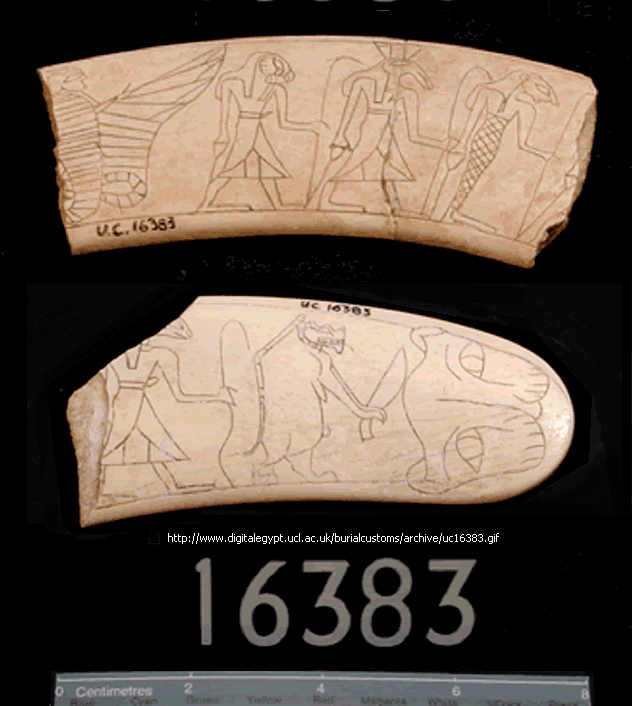
Pieces of (hippopotamus) ivory magical wand, Middle Kingdom ? (1700BCE-2024BCE)
Petrie Museum number - UC16383

Pieces of (hippopotamus) ivory magical wand, Middle Kingdom ? (1700BCE-2024BCE)
Petrie Museum number - UC16383
| These two small (8cm {3in}) pieces of a magical wand are not contiguous. The first piece has a winged snake goddess to the far left, then a god of uncertain deity (is it a falcon head or a lion head?), Set is easily recognizable, and to his right is a goddess, perhaps with a lion head. The other piece includes the rounded end with a lion head, to its left, Taweret wielding a knife, and an unidentifable god to her left. |
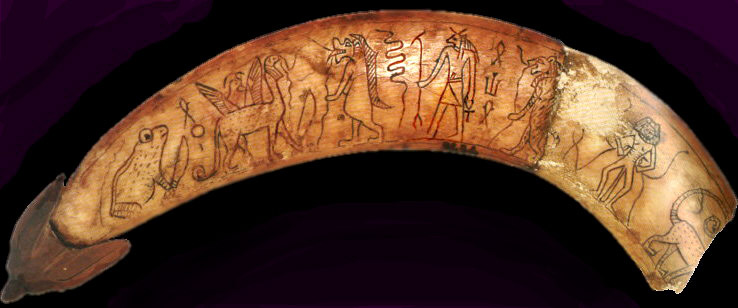
|
This 12th Dynasty wand amulet is at the Cairo Museum. I've made a small digital amulet using the Set image in it:
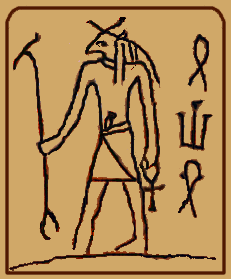
Tawaret shows as a hippotamus and appears to the left of Set on that wand, as does the frog Goddess Heket, also associated with protection of childbirth.
Sources:
The Global Egyptian Museum website shares another wand, aka 'knife':
|
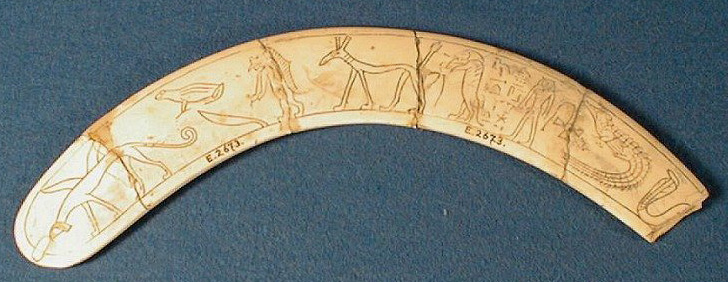
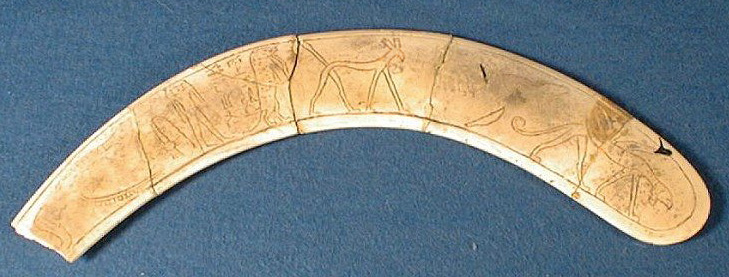
reverse of that knife, showing Set, represented by his animal, is on both sides...
| The British Museum has some more of these wands. Here's one that features Set's head, in addition to other figures: |
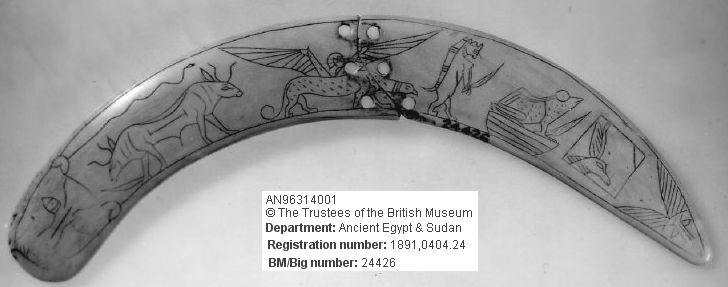
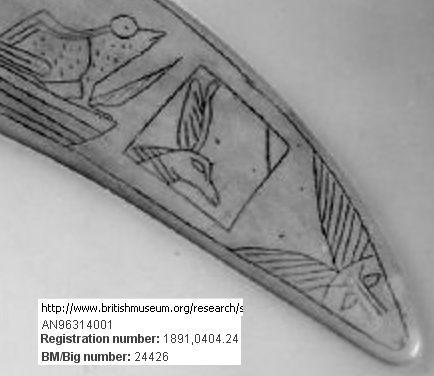
Close-up of Set's head, or is this a jackal head? As in Wepwawet or Anubis?
As I edit this page in 2016, I'm much more inclined to think this is a jackal head.
|
I was wondering about the unusual design, putting the image of the deity in a square, if it had any significance. I noticed Set (or a jackal deity) is not the only deity to receive this treatment. I found a menat fragment from Thebes that at first appears to feature Horus in a very similar square:
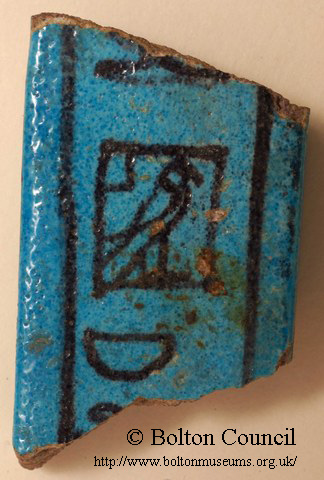 Faience menat fragment from Deir el-Bahri, Thebes, Egypt, Mentuhotep II Temple, Dynasty XVIII Ref. No 1904.48:07 © Bolton Council
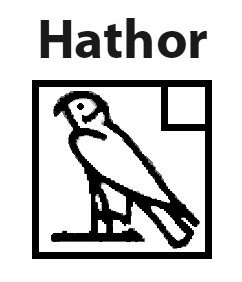 Source: The Routledge Dictionary of Egyptian Gods and Goddesses, by George Hart
While looking for something else, a chance sighting in Ritner's _Mechanics of Ancient Egyptian Magical Practice_ turned up just such a box:
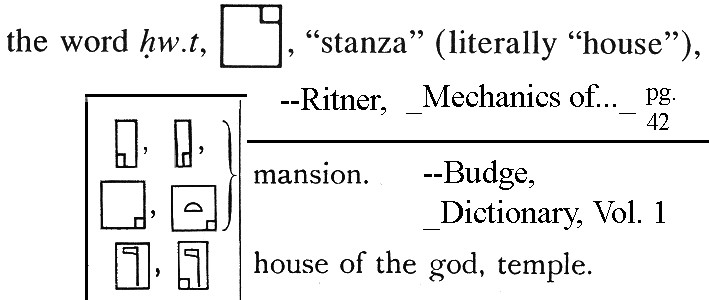 "the word HWT...literally 'house' Budge shows that combined with a deity, it means 'Temple of that Deity' Thus, it's a very, very long shot, but could the ivory wand be referring to a temple of Set (or one of the jackal headed deities?) Meanwhile, the British Museum has another wand. It too is damaged, and the image of Set has faded: |
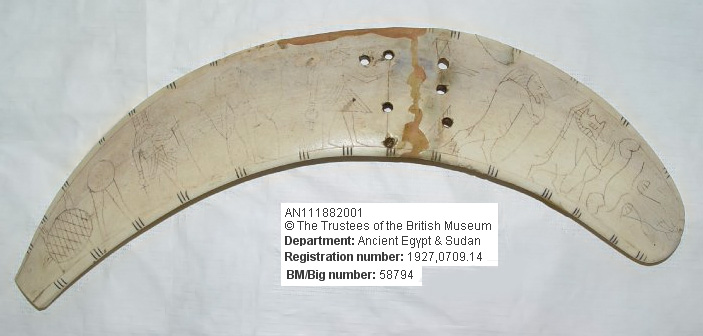
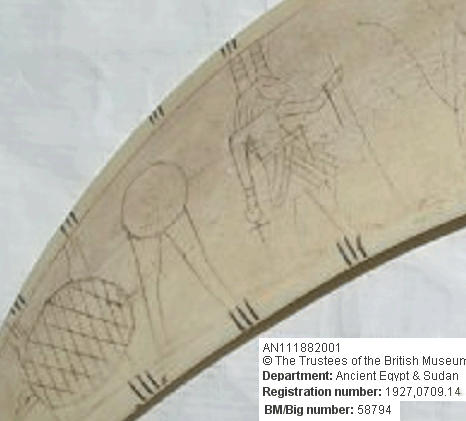
Close-up of Set
|
I wonder if there's significance to the seven binding holes, rather than just six. Seven was a very magical number to the ancient Egyptians. Here's another wand, with very clear details:
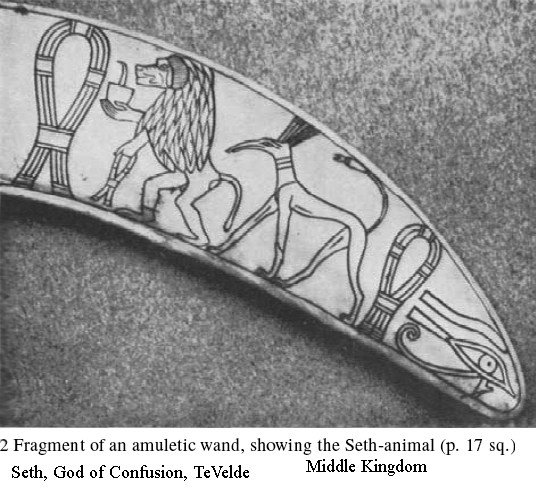 2 Fragment of an amuletic wand, showing the Seth-animal (p. 17 sq.) _Seth, God of Confusion_, TeVelde, Plate II, 2: Dynastic Egypt in the Royal Scottish Museum, Edinburgh, 1955, pl. 7.
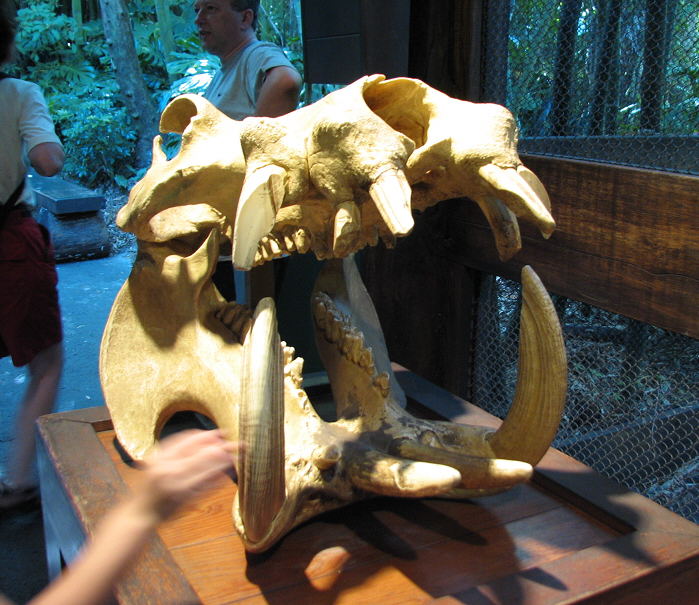 You can see how these wands have the rounded shape that they do, using the ivory from these strong teeth which the hippo uses for fighting.
|


